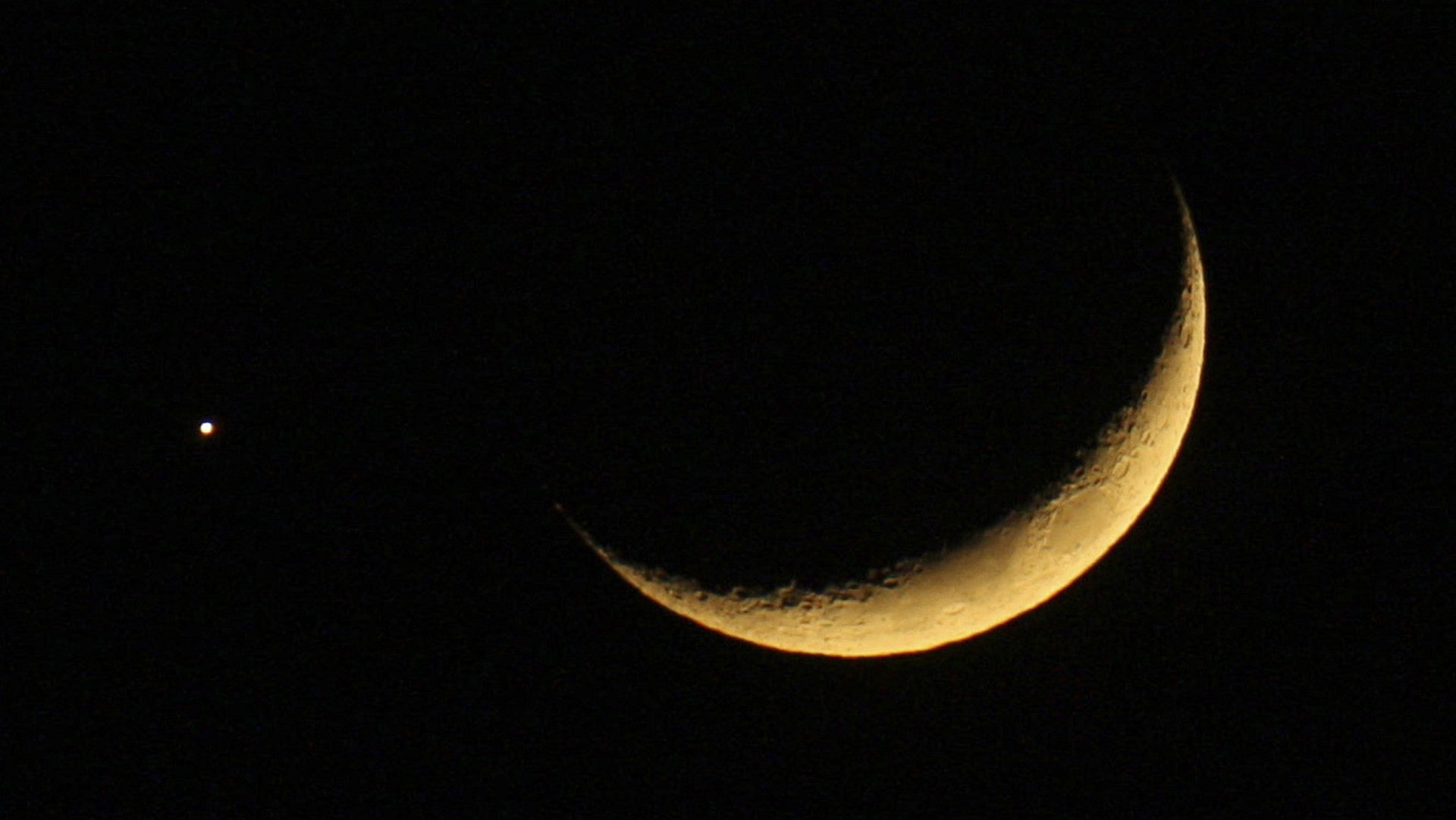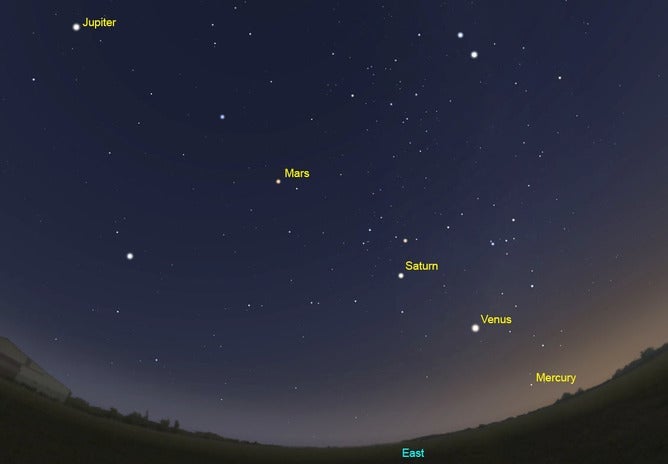Starting today, see Mercury, Venus, Mars, Jupiter, and Saturn in the sky at the same time
This post has been corrected.


This post has been corrected.
For the first time in a decade, it’s possible to see the first six planets in the solar system (minus the one we’re on) at the same time.
About an hour before sunrise on Tuesday (Jan. 19), Mercury tipped from below the horizon into the sky, joining Venus, Saturn, Mars, and Jupiter, which all rose at different points between 9pm and 5am.
For the next few weeks, you should be able to see these five planets lined up, from anywhere in the world. You’ll need to get a gander about 45 minutes before the sun rises.

Weather (and light pollution) depending, the planets should be visible to the naked eye, with Venus glowing brightest. (If you’re having trouble distinguishing the planets from the stars, a star-gazing app like Sky Guide on iOS or Sky Map for Android might prove helpful.)
The five are expected to be visible together until Feb. 20, but as Sky & Telescope suggests, the next two weeks are really the best time to see Mercury.
The whole party recurs again in mid-August, after sunset instead of before sunrise. Stargazers in the southern hemisphere will have an easier time spotting all five planets, then.
Correction (Jan. 21, 2016, 8:30am ET): An earlier version of this post stated that the app Sky Guide is free.